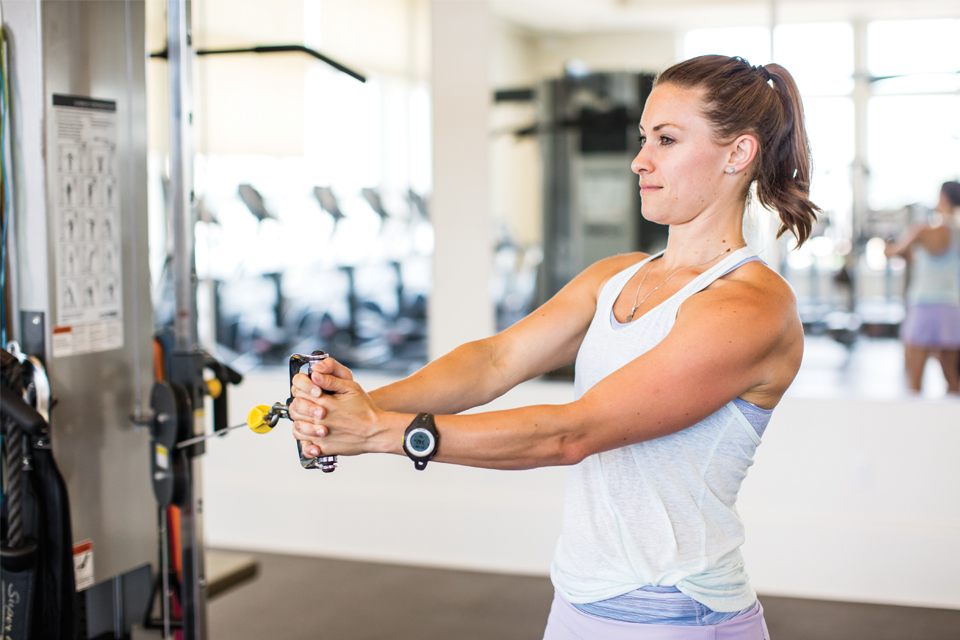Building The Connection

*performed by Sarah Brannon, Mecca Gym & Spa
Training to become bigger, stronger, and faster usually involves using multi-joint, larger total body movements. Think about how your sprinting or jumping technique involves connecting ground reaction forces from your lower body to the counter movement of your upper body. The full expression of speed or power makes it really easy to see how important the force transfer is through the torso to make this connection and act as a conduit of energy. So, if your torso or core muscles are not functioning properly, it may result in these “energy leaks” and a less-than-stellar performance. The movements here are great to strengthen the full kinetic chain and challenge this connection between the hips and the shoulders. And these movements will also apply a couple of different exercise strategies in order to create the load to progress to higher levels of strength.
1/ Pallof Press with Cable
Purpose: Use a horizontal direction of load in order to challenge the torso stabilization strength in the frontal plane. Then the change in the lever arm during the press will add a unique rotational torque for training.
+ Start by standing shoulder width apart and feet in line with the cable. Hold the cable just in front of your navel with both hands.
+ Maintaining your stance and an upright posture and reaching the crown of your head to the sky, use a smooth controlled motion to press your hands out in front of your navel until elbows are fully extended.
+ Your arms should form a triangle with your chest.
+ Return to start. Perform the desired number of repetitions then turn facing the opposite direction to put the emphasis on the opposite side of the body.

Keep reading to see the next workout move!
2/ TRX Fallouts
Purpose: Challenge core strength by lengthening the lever arm of the full kinetic chain. TRX will give you the ability to adjust to the proper intensity and progress based on your individual ability.
+ Start by standing in a vertical plank position with feet hip-width apart and arms extended forward at 90 degrees, facing away from anchor.
+ Lean into your TRX hand position while slowly flexing at the shoulders and maintain an extended elbow. This will lengthen the lever arm until your arms are overhead.
+ Always maintain your plank position and don’t allow any movement in your torso, hip, or knees.
+ You can increase or decrease intensity by adjusting the foot position either closer or farther away from the TRX anchor.
+ Also be conscious of maintaining head and neck in line with torso.

Keep reading to see the next workout move!
3/ Rollouts with Stability Ball
Purpose: The plank on the ball is further challenged by again lengthening the lever arm as you flex at the shoulders and reach forward with the elbow. This is also a great anti-extension movement.
+ Get into a plank position with your elbows under your shoulders on the apex of the stability ball. Feet should be shoulder-width apart with your toes pulled toward your shin.
+ Start the movement by rolling the ball forward using your forearms. Make sure your forearms are parallel with your torso and do not clasp the hands together. (This creates internal rotation of the shoulders and causes you to disengage the lats which are assisting in maintaining a strong connection from your arm to your torso.)
+ Make sure nothing in plank position changes below the shoulders.
+ With control, pull the ball back to start position with your forearms.








